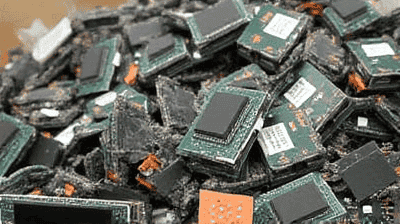
In today's digital world, the proliferation of technological devices has led to a growing concern: electronic waste, commonly known as e-waste. E-waste encompasses a wide range of discarded electronic products, including old computers, smartphones, tablets, televisions, and other gadgets. As consumers upgrade their devices at an unprecedented rate, the amount of e-waste generated continues to rise, creating significant environmental challenges, particularly concerning soil contamination.
Electronic waste refers to the discarded electrical or electronic devices, which may include items that are broken, obsolete, or no longer useful. E-waste includes:
Consumer Electronics: This category includes devices like smartphones, laptops, desktop computers, televisions, and gaming consoles.
Industrial Equipment: Outdated or broken machinery used in manufacturing processes also contributes to e-waste.
Home Appliances: Devices such as refrigerators, microwaves, and air conditioners also fall under the umbrella of e-waste.
Batteries: E-waste encompasses various types of batteries used in gadgets and power banks.
As of recent estimates, the world generates over 50 million tons of e-waste annually, a figure expected to rise significantly. According to the Global E-Waste Monitor, this number could reach 74 million tons by 2030. The rapid pace of technological advancement, planned obsolescence, and changing consumer habits contribute to this growing trend.

One of the most pressing environmental concerns associated with e-waste is its potential to contaminate soil. The components of electronic devices often contain toxic materials that pose serious risks to the environment upon disposal.
E-waste can contain a variety of hazardous substances, including:
Heavy Metals: Elements such as lead, mercury, cadmium, and arsenic are often present in electronic devices. These substances can leach into the soil, severely affecting its quality and health.
Flame Retardants: Many electronics contain brominated flame retardants, which can accumulate in the environment and disrupt endocrine functions.
Chemicals: Solvents and chemicals used in the manufacturing of electronic components may also be present, posing risks not only to soil but also to groundwater sources.
When e-waste is improperly disposed of, either in landfills or through informal recycling practices, pollutants can seep into the ground. Key pathways for contamination include:
Leachate Formation: Rainwater can filter through e-waste in landfills, dissolving harmful substances and producing leachate, which can contaminate underlying soil and groundwater.
Incineration: Burning e-waste releases toxic emissions that can settle on nearby land, contributing to soil contamination in surrounding areas.
Improper Dismantling: Informal recycling operations often lack adequate safety measures, leading to the release of toxic materials during the dismantling process.
The long-term effects of soil contamination from e-waste can be severe, leading to:
Reduced Soil Fertility: Pollutants can disrupt the biological activity of soil, adversely affecting its structure and diminishing its ability to support plant growth.
Biological Accumulation: Toxic heavy metals can accumulate in the food chain, posing risks to human health and wildlife.
Ecosystem Disruption: Contaminated soil can harm entire ecosystems, reducing biodiversity and threatening habitat health.
E-waste recycling is a crucial strategy for preventing soil contamination and mitigating the adverse effects associated with electronic waste. Implementing effective recycling practices brings numerous benefits, including reducing pollution, preserving natural resources, and promoting sustainable waste management.
Proper recycling of electronic waste prevents the release of hazardous chemicals and heavy metals into the environment. By recycling instead of disposing of e-waste in landfills, the risk of soil contamination is significantly minimized.
Many electronic devices contain valuable materials that can be recovered and reused through recycling. This includes:
Metals: Precious metals such as gold, silver, copper, and palladium can be extracted from circuit boards and components, reducing the need for mining new resources.
Plastics: Various plastics used in electronics can be reprocessed and utilized in manufacturing new products, contributing to resource conservation.
Understanding the e-waste recycling process can shed light on how it effectively mitigates environmental concerns:
Collection and Logistics: E-waste is collected through designated drop-off points, events, or curbside pickups. Proper logistics ensures that the waste is transported safely to recycling facilities.
Sorting and Dismantling: Upon arrival at recycling facilities, e-waste is sorted based on its type and material composition. Dismantling is conducted carefully to separate hazardous components before further processing.
Material Recovery: Recyclers employ various techniques to recover valuable materials from e-waste, including mechanical separation, chemical extraction, and refining.
Safe Disposal: Hazardous materials that cannot be recycled safely are disposed of according to legal regulations, ensuring that they do not pose a risk to the environment.

To maximize the effectiveness of e-waste recycling and ensure minimal environmental impact, several best practices should be followed:
Public awareness campaigns are essential for encouraging responsible e-waste disposal and recycling. Efforts should focus on:
Informative Resources: Providing easy-to-understand materials about the importance of recycling e-waste and the potential dangers of improper disposal.
Educational Workshops: Organizing community workshops to educate citizens on local recycling options and how to handle e-waste safely.
Manufacturers can play a critical role in facilitating recycling efforts by adopting design principles that make products easier to disassemble and recycle. Strategies include:
Modular Design: Creating products with easily replaceable parts can extend the lifespan of devices and reduce waste.
Material Selection: Using safer materials that are recyclable and less harmful to the environment is essential in product design.
Governments and organizations should work together to establish convenient and accessible e-waste recycling infrastructure. Key steps include:
Public Drop-Off Centers: Creating designated drop-off locations where citizens can safely dispose of e-waste.
Partnerships with Retailers: Collaborating with electronic retailers to implement take-back programs for used devices.
Implementing strong regulatory frameworks and policies can help manage e-waste effectively. Examples include:
Extended Producer Responsibility (EPR): Holding manufacturers responsible for managing the entire lifecycle of their products can incentivize better design and recycling practices.
E-Waste Bans: Enforcing bans on disposal of e-waste in landfills can direct waste to recycling facilities and enhance public compliance.
While the benefits of e-waste recycling are clear, several challenges must be addressed to improve its effectiveness:
One of the most significant challenges in e-waste management is the growth of the informal recycling sector. Informal recyclers often lack proper training, equipment, and safety protocols, leading to:
Health Risks: Inadequate handling of hazardous materials poses health risks to workers and surrounding communities.
Environmental Pollution: Informal recyclers may engage in harmful practices such as open burning or risky chemical leaching, which contributes to soil and water contamination.
Many consumers are still unaware of the proper ways to dispose of their electronic devices. Increasing public knowledge about e-waste impacts and recycling options is crucial. Efforts may include:
Outreach Campaigns: Partnering with community organizations and schools to educate the public on e-waste issues and safe disposal practices.
Accessible Information: Providing clear and accessible information about recycling locations and procedures through websites and social media platforms.
Many individuals and communities face economic barriers that prevent them from participating in recycling programs. This may include:
Costs Associated with Recycling: Ensuring that recycling services are affordable and accessible to all is essential for widespread participation.
Resource Limitations for Small Businesses: Small electronics recycling businesses may struggle with competition from larger corporations, leading to inefficiencies in the recycling process.

Across the globe, several initiatives have proven successful in mitigating the challenges of e-waste management and promoting recycling. Here are a few notable examples:
The Basel Convention is an international treaty aimed at regulating the movement of hazardous waste, including e-waste, across borders. Key outcomes include:
Global Standards: The Convention establishes legal frameworks for the management and disposal of hazardous waste, fostering international cooperation.
Capacity Building: The Basel Convention promotes the development of waste management capabilities in developing countries, enhancing their ability to address e-waste issues.
The Electronics TakeBack Coalition (ETBC) is an organization working to promote e-waste recycling through manufacturer responsibility. Key initiatives include:
Manufacturer Rankings: The ETBC conducts evaluations of electronics companies based on their recycling practices and policies, providing transparency for consumers.
Advocacy: The coalition advocates for stronger regulations and policies related to e-waste recycling and sustainable manufacturing.
Numerous communities have implemented successful local programs to increase e-waste recycling participation. Success stories include:
Citywide E-Waste Events: Cities that organize regular collection events for e-waste encourage residents to participate in responsible recycling. These events often include partnerships with local recycling companies.
School Recycling Programs: Schools that set up e-waste recycling initiatives can educate students on sustainability while collecting usable materials for recycling.
As the electronic industry continues to evolve, so too must our approaches to e-waste recycling. Key trends that may shape the future of e-waste management include:
Advancements in recycling technologies can enhance the efficiency and effectiveness of e-waste processing. Innovations may include:
Automated Dismantling: Utilizing robotics and automation to dismantle electronic devices can improve efficiency and worker safety.
Advanced Material Recovery: Developing more sophisticated techniques for recovering valuable materials can increase recycling rates and reduce environmental impact.
Cooperation between manufacturers, recyclers, governments, and consumers is essential for creating a sustainable e-waste recycling ecosystem. This includes:
Shared Resources: Establishing partnerships to share knowledge, technologies, and resources for more effective recycling processes.
Collaborative Initiatives: Engaging in joint community programs can raise awareness and drive participation in recycling efforts.
Governments need to enhance regulations surrounding e-waste disposal and recycling to increase accountability across the value chain:
Stricter Enforcement: Implementing stricter penalties for illegal e-waste dumping can discourage improper disposal practices.
Incentives for Recycling: Providing financial incentives for recycling participation can help motivate consumers and businesses alike.
E-waste recycling plays a vital role in preventing soil contamination and mitigating the environmental impacts of electronic waste. As the volume of e-waste continues to rise, comprehensive strategies focused on recycling, responsible disposal, and public education will be essential in addressing this complex challenge.
By fostering a culture of responsible e-waste management, investing in innovative recycling technologies, and establishing strong regulatory frameworks, we can protect our soils, safeguard public health, and promote sustainability for future generations. The active participation of individuals, communities, businesses, and governments is crucial in transforming e-waste from an environmental liability into a valuable resource.